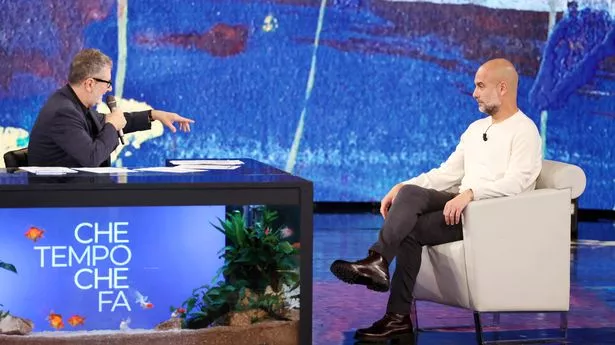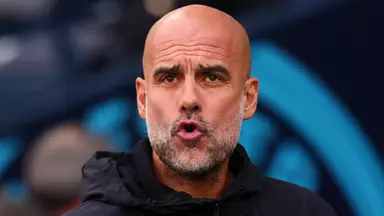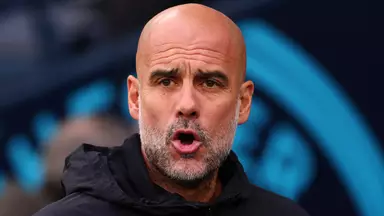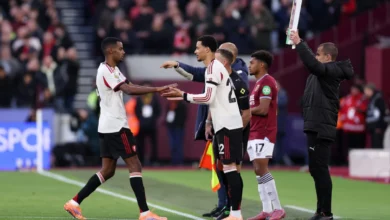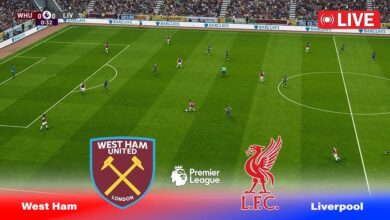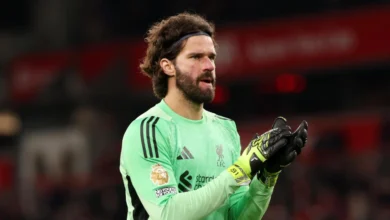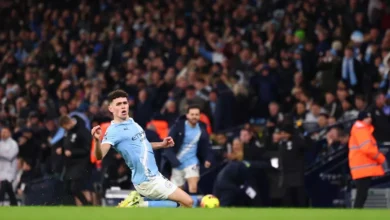Manchester City sell key midfielder as Pep Guardiola’s summer clearout continues
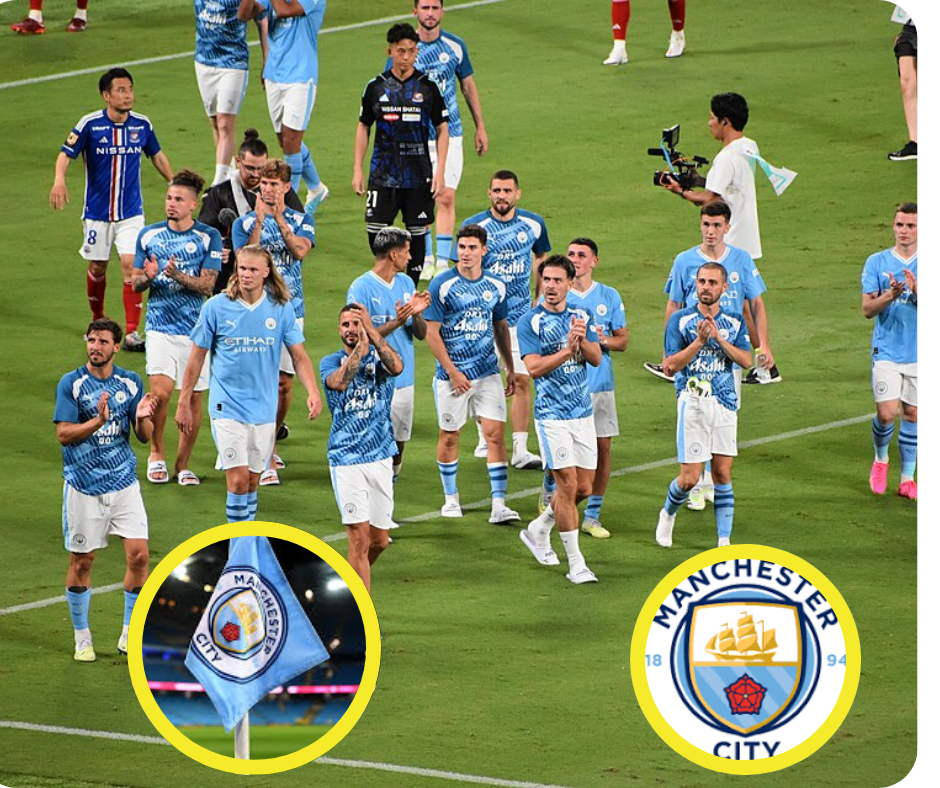
Manchester City have officially completed the permanent transfer of Argentine midfielder Máximo Perrone to Italian Serie A side Como, in a deal that exemplifies the club’s increasingly sophisticated approach to squad management and player development. The transfer, valued at up to €15 million (£13 million), represents far more than a simple player sale—it’s a carefully structured agreement that protects City’s long-term interests while providing immediate financial benefits.
The Financial Architecture: A Masterclass in Modern Transfer Dealings
The Perrone transfer showcases Manchester City’s evolution in their approach to player trading, moving beyond straightforward buy-and-sell transactions to create complex deals that maximize both immediate and future value. The €15 million fee represents excellent business for a player who made just two senior appearances for the club, totaling a mere 25 minutes of competitive football.
However, the true sophistication of this deal lies in its protective clauses and future-oriented thinking. City have negotiated a buy-back clause that allows them to re-sign Perrone at a predetermined fee should he develop into the player they originally envisioned when signing him from Vélez Sarsfield in January 2023. This clause effectively transforms the current sale into a loan with an option to recall, providing City with insurance against potential regret.
Additionally, the inclusion of a 30 percent sell-on clause ensures that City will benefit from any future transfer should Perrone’s career trajectory continue upward. This clause could prove particularly valuable given the inflated nature of the modern transfer market, where promising players can command fees that multiply dramatically over short periods.
The financial structure also reflects City’s compliance with Financial Fair Play regulations, as the immediate injection of €15 million helps offset recent expenditures while the future clauses ensure long-term value retention. This approach has become increasingly common among elite clubs seeking to balance immediate financial needs with strategic asset management.
Perrone’s Journey: From Promise to Pragmatism
Máximo Perrone’s Manchester City career, while brief in terms of first-team appearances, represents a fascinating case study in modern football’s talent identification and development ecosystem. The 22-year-old Argentine arrived at the Etihad Stadium with considerable promise, having impressed scouts with his performances for Vélez Sarsfield in Argentina’s Primera División.
His initial signing represented City’s commitment to identifying and acquiring young talent from South America, a market that has traditionally provided exceptional value for European clubs. However, the reality of breaking into Guardiola’s midfield—featuring established stars like Kevin De Bruyne, Bernardo Silva, and Rodri—proved virtually impossible for the young Argentine.
Perrone’s limited opportunities at City—18 minutes against Bournemouth in the Premier League and a brief cameo in the FA Cup against Bristol City—highlight the challenges facing young players at elite clubs. Despite his undoubted talent, the gap between promise and immediate first-team readiness proved too significant to bridge in City’s ultra-competitive environment.
The decision to loan him to Como for the 2023-24 season proved transformative for both player and club. Under the guidance of Cesc Fàbregas, Perrone rediscovered his confidence and began to fulfill the potential that had attracted City’s attention in the first place. His performances in Serie A demonstrated the technical ability and tactical intelligence that had made him a target for one of Europe’s most successful clubs.
Cesc Fàbregas: The Mentor Factor
The role of Cesc Fàbregas in Perrone’s development cannot be overstated. The former Arsenal, Barcelona, and Chelsea midfielder has quickly established himself as one of Europe’s most promising young coaches, and his influence on Perrone’s game has been profound. Fàbregas’s understanding of what it takes to succeed at the highest level, combined with his tactical acumen, created the perfect environment for the Argentine to flourish.
Under Fàbregas’s tutelage, Perrone adapted to the demands of Italian football, developing his positional discipline and learning to operate effectively in Como’s system. The Spanish coach’s emphasis on technical excellence and tactical intelligence aligned perfectly with Perrone’s natural attributes, allowing him to demonstrate the qualities that had originally attracted Manchester City’s interest.
The successful partnership between player and coach was instrumental in Como’s decision to make the loan permanent. Fàbregas’s endorsement of Perrone’s ability and character provided the club’s hierarchy with confidence that the investment would prove worthwhile. This relationship also suggests that Perrone’s development will continue under expert guidance, potentially validating City’s decision to include protective clauses in the transfer agreement.
Serie A Integration: The Italian Experience
Perrone’s successful adaptation to Serie A reflects both his personal resilience and the league’s reputation for developing technical players. Italy’s top flight has long been recognized as an excellent environment for young players to develop their tactical understanding and technical skills, with the league’s emphasis on positional play and defensive organization providing valuable learning experiences.
Como’s return to Serie A after an extended absence created unique circumstances for Perrone’s development. As a newly promoted club, Como provided opportunities for regular first-team football that might not have been available at more established Serie A sides. This environment allowed Perrone to gain valuable experience while contributing to the club’s successful adaptation to top-flight football.
The midfielder’s performances helped Como secure a respectable 10th-place finish in their first season back in Serie A, demonstrating both his individual quality and his ability to contribute to team success. This achievement validates the loan strategy employed by Manchester City and suggests that the permanent transfer represents sound business for all parties involved.
The Broader Context: Guardiola’s Squad Evolution
The Perrone transfer must be understood within the broader context of Pep Guardiola’s ongoing squad evolution at Manchester City. The Spanish coach has consistently emphasized the importance of maintaining a balanced squad size, arguing that too many players can create unhealthy competition and diminish team cohesion.
Guardiola’s recent comments about the squad being “too large” reflect his philosophical approach to team management, which prioritizes quality over quantity and emphasizes the importance of every player feeling valued and having realistic opportunities for involvement. This approach has been vindicated by City’s sustained success across multiple competitions, with the manager’s ability to rotate his squad effectively being a key factor in their achievements.
The departure of established figures like Kevin De Bruyne and Kyle Walker, alongside promising youngsters like Perrone, suggests a comprehensive restructuring of the squad. This evolution reflects Guardiola’s forward-thinking approach and his determination to maintain City’s competitive edge by refreshing the squad with new talent and energy.
Financial Strategy: The Nypan Connection
The timing of Perrone’s transfer is particularly significant given Manchester City’s recent acquisition of 18-year-old Norwegian midfielder Sverre Nypan for £12.5 million. The fact that Perrone’s transfer fee nearly covers the cost of signing Nypan demonstrates City’s sophisticated approach to squad management and financial planning.
This strategy reflects a broader trend in modern football, where clubs increasingly focus on buying young players with high potential while selling those who haven’t established themselves in the first team. The approach allows clubs to maintain financial balance while continually refreshing their squads with new talent.
Nypan’s signing represents the type of long-term investment that City are prioritizing in their squad development. The Norwegian teenager is regarded as one of Europe’s brightest prospects, and his acquisition suggests that City remain committed to identifying and developing young talent despite the challenges highlighted by Perrone’s experience.
Market Dynamics: The New Reality of Player Trading
The Perrone transfer reflects broader changes in the football transfer market, where clubs are increasingly focused on maximizing value from every transaction. The inclusion of buy-back clauses and sell-on fees has become standard practice among elite clubs, reflecting a more sophisticated understanding of player value and development trajectories.
This approach recognizes that player development is not always linear and that young players may benefit from experiencing different environments and challenges. By maintaining connections to players through contractual clauses, clubs can benefit from successful development while minimizing the risk of permanent mistakes.
The strategy also reflects the increasing importance of data and analytics in player evaluation. Modern clubs have access to comprehensive performance data that allows them to make more informed decisions about player potential and development trajectories. This information enables more sophisticated contractual arrangements that protect long-term interests while facilitating immediate needs.
Looking Forward: Implications for City’s Future
The Perrone transfer represents more than just a squad adjustment—it signals Manchester City’s commitment to evolving their approach to player development and squad management. The success of this strategy will depend on several factors, including the club’s ability to identify and develop young talent, their success in negotiating protective clauses, and their overall approach to squad balance.
The transfer also highlights the challenges facing young players at elite clubs, where the standard for first-team involvement is exceptionally high. While City’s approach provides opportunities for development through loans and eventual transfers, it also requires players to be resilient and adaptable in pursuing their careers.
For Como, the permanent acquisition of Perrone represents a significant statement of intent as they seek to establish themselves as a Serie A regular. The club’s willingness to invest in the Argentine midfielder demonstrates their confidence in his ability and their commitment to building a competitive squad.
Conclusion: Strategic Excellence in Player Management
The Máximo Perrone transfer exemplifies Manchester City’s evolution from a club focused purely on acquiring the best players to one that demonstrates sophisticated understanding of player development, financial management, and strategic planning. The deal’s structure protects City’s interests while providing Perrone with the opportunity to fulfill his potential in an environment better suited to his development needs.
As Guardiola continues to reshape his squad for the challenges ahead, the Perrone transfer serves as a template for how modern clubs can balance immediate needs with long-term strategic thinking. The success of this approach will ultimately be measured not just in financial terms, but in the club’s ability to maintain their competitive edge while developing the next generation of talent.
The transfer represents a win-win scenario that could serve as a model for similar deals in the future, demonstrating that with careful planning and strategic thinking, player transfers can benefit all parties involved while contributing to the broader evolution of football’s ecosystem.
